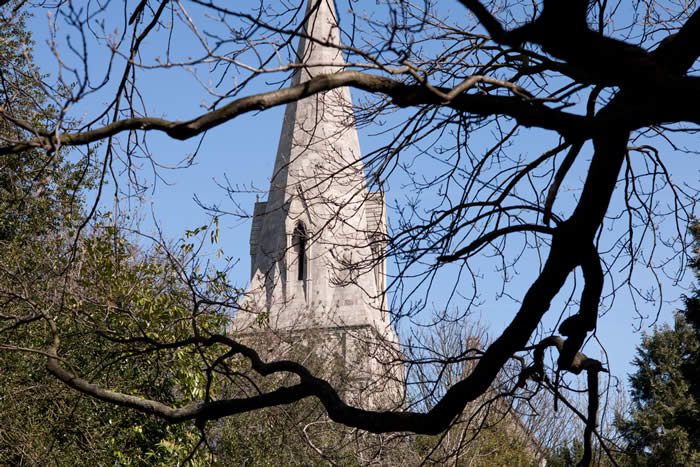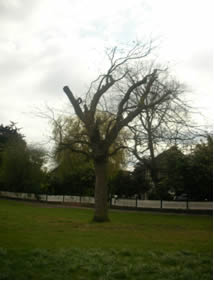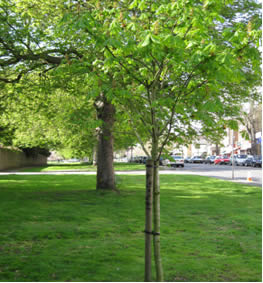
The conservation area has been the fortunate recipient of the planting of previous generations. However, storms, accidents, traffic pollution and building developments have reduced this rich inheritance. Even the Minchenden Oak at the centre of Minchenden Gardens is displaying some damage and in many other areas of the conservation area, trees have been lost.
Cannon Hill Horse Chestnuts
The Horse Chestnuts on The Green and Cannon Hill are large trees that, with age, have suffered the varying effects of weather, leaf miner and infections. But over the past few years another ailment known as ‘bleeding canker disease’ has taken hold. This causes lesions, drying out/weakening/death of the branches; trees progressively become disfigured, lose stability and can become too dangerous to remain in situ. This disease has spread rapidly across southern England and over the last few years, the forestry commission estimate that thousands of mature chestnuts have been lost. Cannon Hill was originally planted with elm trees in the late 1920s but after a decade, these were replaced with Horse chestnuts as the elms had fallen victim to disease. About 2/3 of the chestnuts are over 50 years old with some 20/30 year specimens and four which SGA sponsored 6 years ago. Horse Chestnuts are no longer considered suitable as street trees because of their brittle nature which makes them susceptible to breakage which leads to other problems- infections, etc.
 Last year, two chestnuts were removed as well as a tree which fell over near the bus top. Currently, one large chestnut facing the Cherry Tree roundabout has lost several large branches and the state of the diseased tree is clearly visible. Similarly, in some of the Chestnuts on Cannon Hill, close inspection shows the extent to which many have lost several sections of the upper crowns.
Last year, two chestnuts were removed as well as a tree which fell over near the bus top. Currently, one large chestnut facing the Cherry Tree roundabout has lost several large branches and the state of the diseased tree is clearly visible. Similarly, in some of the Chestnuts on Cannon Hill, close inspection shows the extent to which many have lost several sections of the upper crowns.
Trees are currently being assessed as to the extent of damage but we have been advised that two more on the Green and also a clump near 1/Cannon Hill roadside are likely to be removed in the near future because of their poor condition.
The steady loss of the chestnut trees will change the street scene and SGA is keen to ensure that key vistas- views coming up Cannon Hill or from the Green preserve the majestic visual quality the chestnuts endow. Replacement of lost trees needs careful consideration to achieve this.
Trees around the Bus Shelter and Cherry Tree Slip Road
The trees around the bus shelter are in poor condition, and these will be removed but replaced with suitable sized street tree. One of the large Cherry Trees has also died near the entrance of the slip road and will be removed. The poor condition of the sponsored young cherry trees means those will be replaced.
New Tree Management Strategy– Trees are now on a two year rota for maintenance. LBE have signed a new contractor for tree planting which includes a watering contract, and root diversion system to ensure roots do not interfere with the pavement.
Survey of sponsored trees – about 40% of those planted has died. These include those on the High Street and near the Cherry Tree. These will be replaced at LBE’s expense and with a new watering contract in place, any future sponsored trees should have a higher survival rate.
Areas for potential New plantings – There are areas which would benefit from verge planting, notably on the High Street and top of Arnos Grove. SGA has identified these to LBE but members are encouraged to send us your suggestions. This year LBE aim to plant 700 trees across the borough and we want to ensure that a fair number are planted in Southgate Green.
